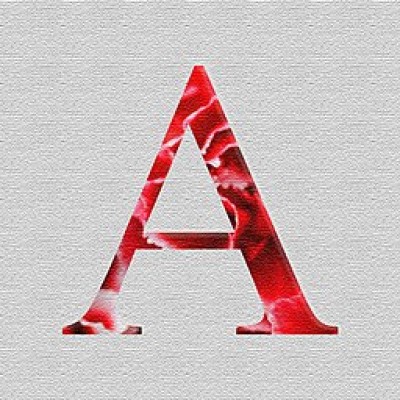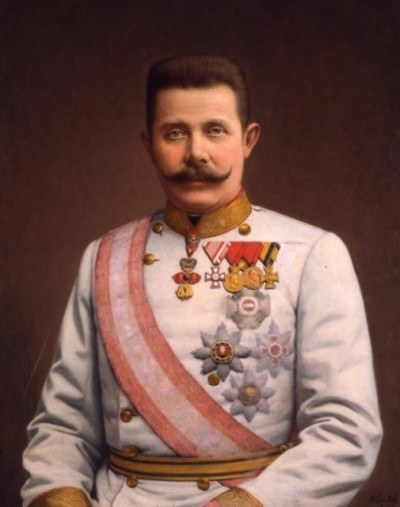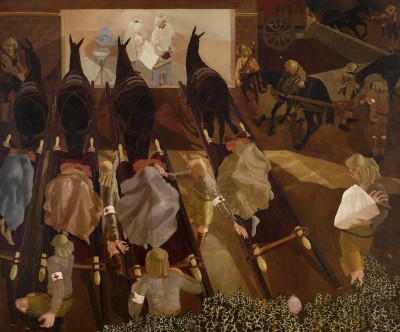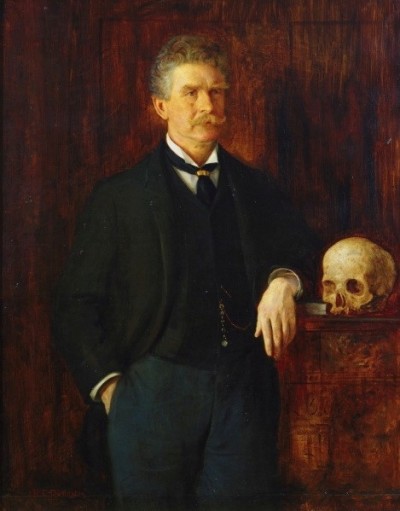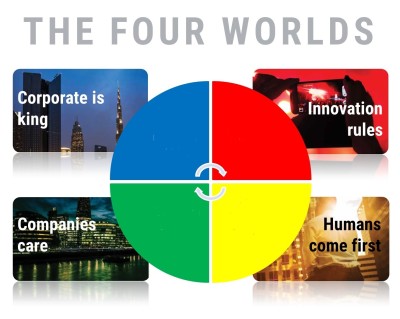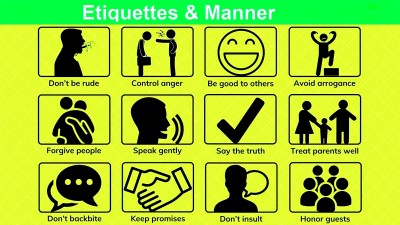Course description
The Development of Western Alphabets
The word ‘alphabet’ comes from the first two letters of the Greek alphabet: alpha and beta. The Greeks invented an alphabet in which every sign represented a sound. Much of it was taken from the Phoenicians, who lived on the Mediterranean coast of the Middle East, and the lands they conquered as far west as Morocco. Their alphabet, dating from about 1200 B.C., was Semitic and used symbols like these (click here) .  You can see the similarities with Roman script too.
copyright : Kordas, based on Alvaro's work / CC BY (https://creativecommons.org/licenses/by/3.0)
The Phoenicians did not have vowels (like a, e, i, o or u) in their twenty-two letter alphabet and, at different points in their history, wrote from left to right, right to left or in whichever direction they wished.
The Greeks adapted these letters but also added vowels. Obviously, Phoenicians had different sounds in their spoken language from Greek and, so, the Greeks simply turned the letters they did not need upside down and made vowels out of them. They always wrote from left to right. Classical Greek looks like this: (click here)
These are the opening lines of Homer’s Odyssey, written around the middle of the eighth century B.C.
Greek and Phoenician alphabets were different from what came before because each letter represented a sound, not a syllable.
So, what came before?
512px-Inlay-_seated_male_with_cup_and_palm_frond_MET_DP122510.jpg (512×465)
You can see the similarities with Roman script too.
copyright : Kordas, based on Alvaro's work / CC BY (https://creativecommons.org/licenses/by/3.0)
The Phoenicians did not have vowels (like a, e, i, o or u) in their twenty-two letter alphabet and, at different points in their history, wrote from left to right, right to left or in whichever direction they wished.
The Greeks adapted these letters but also added vowels. Obviously, Phoenicians had different sounds in their spoken language from Greek and, so, the Greeks simply turned the letters they did not need upside down and made vowels out of them. They always wrote from left to right. Classical Greek looks like this: (click here)
These are the opening lines of Homer’s Odyssey, written around the middle of the eighth century B.C.
Greek and Phoenician alphabets were different from what came before because each letter represented a sound, not a syllable.
So, what came before?
512px-Inlay-_seated_male_with_cup_and_palm_frond_MET_DP122510.jpg (512×465)
 Well, the earliest writing – although we cannot call them alphabets – probably originated in the fourth millennium B.C., probably 3200. The Sumerians, living in what is now Iraq, came up with a script that we call cuneiform today. It looks like little scratches and was made on clay. There were about 300 different scratch marks to communicate meaning, but these did not represent individual sounds or syllables but were, in fact, ideas. In even the largest Sumerian city, there were only a few dozen people who could write. These were called ‘scribes’ and they had entered special schools to learn to do so, in the hope that they could earn a living from this skill. The training was really demanding too.
The first writing was probably used to record commercial transactions: this person bought this much of that at such and such a price. Later, when writing was more established, it was also used to describe the courage, talents and achievements of kings.
Here is an example of cuneiform: (click here)
About the same time or, perhaps, a couple of hundred years later, the Egyptians were developing hieroglyphics, which have become famous because they were used on pyramids and are seen on the Net, TV and just about everywhere else. We do not know if hieroglyphs developed independently of cuneiform or if they borrowed from it. However, the visual impression is very different. First, they are stylized pictures and there are about 600 of them. Again, very, very few people ever learnt to write – although most Pharaohs could – and they were first used for exactly the same reasons as the Sumerians developed cuneiform: trade and flattery.
Have a look at these hieroglyphs, found on the tomb of a pharaoh, Seti I: (click here)
The shift towards alphabets that represented sounds came in the third millennium B.C. in Babylon (Iraq) and was probably driven by the need to express abstract ideas.
But, interestingly, cuneiform and hieroglyphics probably died out, not because the Phoenicians and Egyptians no longer used them but due to the invasions of their lands towards the end of the second millennium B.C. Their city states broke down and were replaced by new ones, governed by new rulers. These conquerors found the developing alphabets more useful and flexible and so adopted them, rather than the older writing systems.
And, from then on, the alphabet quickly adapted to Latin, Slavic but also Aryan languages too, so that just about any alphabet existing today has its roots in the history we have just explored.
512px-George_bernard_shaw.jpg (512×778)
Well, the earliest writing – although we cannot call them alphabets – probably originated in the fourth millennium B.C., probably 3200. The Sumerians, living in what is now Iraq, came up with a script that we call cuneiform today. It looks like little scratches and was made on clay. There were about 300 different scratch marks to communicate meaning, but these did not represent individual sounds or syllables but were, in fact, ideas. In even the largest Sumerian city, there were only a few dozen people who could write. These were called ‘scribes’ and they had entered special schools to learn to do so, in the hope that they could earn a living from this skill. The training was really demanding too.
The first writing was probably used to record commercial transactions: this person bought this much of that at such and such a price. Later, when writing was more established, it was also used to describe the courage, talents and achievements of kings.
Here is an example of cuneiform: (click here)
About the same time or, perhaps, a couple of hundred years later, the Egyptians were developing hieroglyphics, which have become famous because they were used on pyramids and are seen on the Net, TV and just about everywhere else. We do not know if hieroglyphs developed independently of cuneiform or if they borrowed from it. However, the visual impression is very different. First, they are stylized pictures and there are about 600 of them. Again, very, very few people ever learnt to write – although most Pharaohs could – and they were first used for exactly the same reasons as the Sumerians developed cuneiform: trade and flattery.
Have a look at these hieroglyphs, found on the tomb of a pharaoh, Seti I: (click here)
The shift towards alphabets that represented sounds came in the third millennium B.C. in Babylon (Iraq) and was probably driven by the need to express abstract ideas.
But, interestingly, cuneiform and hieroglyphics probably died out, not because the Phoenicians and Egyptians no longer used them but due to the invasions of their lands towards the end of the second millennium B.C. Their city states broke down and were replaced by new ones, governed by new rulers. These conquerors found the developing alphabets more useful and flexible and so adopted them, rather than the older writing systems.
And, from then on, the alphabet quickly adapted to Latin, Slavic but also Aryan languages too, so that just about any alphabet existing today has its roots in the history we have just explored.
512px-George_bernard_shaw.jpg (512×778)
 But, just in case you think that modern alphabets are clearly better than ancient ones, consider this. Some European languages, like German and Turkish, have fairly simple representations of individual sounds by single letters or clusters of them. For instance, S in German, standing on its own, always sounds like Z in English and SCH like SH. This gets more complicated with French, where sounds might change so that C in ‘cercle’ (or ‘circle’ in English) is pronounced like an S at the beginning but a K in the middle. However, at least in French, there are rules for pronouncing letter combinations, although they are a bit complicated.
But look at English! It’s impossible. Consider the pronunciation of –OUGH in the following words: OUGHT (or), ENOUGH (uff), COUGH (off), BOUGH (ow) and ALTHOUGH (oh). As George Bernard Shaw, the Irish dramatist, recommended a hundred years ago, English spelling needs extensive changes to help people studying it as a foreign language. Shaw gave this example: GHOTI, pronounced FISH. Yes, you understood – FISH! That’s GH as in ENOUGH, O as in WOMEN (wimmin) and TI as in STATION – FISH!
But, perhaps, it’s too late to change!
If you want to watch some videos on this topic, you can click on the links to YouTube videos below.
If you want to answer questions on this article to test how much you understand, you can click on the green box: Finished Reading?
Videos :
But, just in case you think that modern alphabets are clearly better than ancient ones, consider this. Some European languages, like German and Turkish, have fairly simple representations of individual sounds by single letters or clusters of them. For instance, S in German, standing on its own, always sounds like Z in English and SCH like SH. This gets more complicated with French, where sounds might change so that C in ‘cercle’ (or ‘circle’ in English) is pronounced like an S at the beginning but a K in the middle. However, at least in French, there are rules for pronouncing letter combinations, although they are a bit complicated.
But look at English! It’s impossible. Consider the pronunciation of –OUGH in the following words: OUGHT (or), ENOUGH (uff), COUGH (off), BOUGH (ow) and ALTHOUGH (oh). As George Bernard Shaw, the Irish dramatist, recommended a hundred years ago, English spelling needs extensive changes to help people studying it as a foreign language. Shaw gave this example: GHOTI, pronounced FISH. Yes, you understood – FISH! That’s GH as in ENOUGH, O as in WOMEN (wimmin) and TI as in STATION – FISH!
But, perhaps, it’s too late to change!
If you want to watch some videos on this topic, you can click on the links to YouTube videos below.
If you want to answer questions on this article to test how much you understand, you can click on the green box: Finished Reading?
Videos :
1. The Alphabet - Origins of Writing (6:12)
2. The day the Greeks invented vowels (3:47)
3. Writing Cuneiform (2:23)
4. Cuneiform Earliest Known Writing System (1:00)
5. The Invention of Writing (Hieroglyph - Cuneiform) – (3:39)

 You can see the similarities with Roman script too.
copyright : Kordas, based on Alvaro's work / CC BY (https://creativecommons.org/licenses/by/3.0)
The Phoenicians did not have vowels (like a, e, i, o or u) in their twenty-two letter alphabet and, at different points in their history, wrote from left to right, right to left or in whichever direction they wished.
The Greeks adapted these letters but also added vowels. Obviously, Phoenicians had different sounds in their spoken language from Greek and, so, the Greeks simply turned the letters they did not need upside down and made vowels out of them. They always wrote from left to right. Classical Greek looks like this: (click here)
These are the opening lines of Homer’s Odyssey, written around the middle of the eighth century B.C.
Greek and Phoenician alphabets were different from what came before because each letter represented a sound, not a syllable.
So, what came before?
512px-Inlay-_seated_male_with_cup_and_palm_frond_MET_DP122510.jpg (512×465)
You can see the similarities with Roman script too.
copyright : Kordas, based on Alvaro's work / CC BY (https://creativecommons.org/licenses/by/3.0)
The Phoenicians did not have vowels (like a, e, i, o or u) in their twenty-two letter alphabet and, at different points in their history, wrote from left to right, right to left or in whichever direction they wished.
The Greeks adapted these letters but also added vowels. Obviously, Phoenicians had different sounds in their spoken language from Greek and, so, the Greeks simply turned the letters they did not need upside down and made vowels out of them. They always wrote from left to right. Classical Greek looks like this: (click here)
These are the opening lines of Homer’s Odyssey, written around the middle of the eighth century B.C.
Greek and Phoenician alphabets were different from what came before because each letter represented a sound, not a syllable.
So, what came before?
512px-Inlay-_seated_male_with_cup_and_palm_frond_MET_DP122510.jpg (512×465)
 Well, the earliest writing – although we cannot call them alphabets – probably originated in the fourth millennium B.C., probably 3200. The Sumerians, living in what is now Iraq, came up with a script that we call cuneiform today. It looks like little scratches and was made on clay. There were about 300 different scratch marks to communicate meaning, but these did not represent individual sounds or syllables but were, in fact, ideas. In even the largest Sumerian city, there were only a few dozen people who could write. These were called ‘scribes’ and they had entered special schools to learn to do so, in the hope that they could earn a living from this skill. The training was really demanding too.
The first writing was probably used to record commercial transactions: this person bought this much of that at such and such a price. Later, when writing was more established, it was also used to describe the courage, talents and achievements of kings.
Here is an example of cuneiform: (click here)
About the same time or, perhaps, a couple of hundred years later, the Egyptians were developing hieroglyphics, which have become famous because they were used on pyramids and are seen on the Net, TV and just about everywhere else. We do not know if hieroglyphs developed independently of cuneiform or if they borrowed from it. However, the visual impression is very different. First, they are stylized pictures and there are about 600 of them. Again, very, very few people ever learnt to write – although most Pharaohs could – and they were first used for exactly the same reasons as the Sumerians developed cuneiform: trade and flattery.
Have a look at these hieroglyphs, found on the tomb of a pharaoh, Seti I: (click here)
The shift towards alphabets that represented sounds came in the third millennium B.C. in Babylon (Iraq) and was probably driven by the need to express abstract ideas.
But, interestingly, cuneiform and hieroglyphics probably died out, not because the Phoenicians and Egyptians no longer used them but due to the invasions of their lands towards the end of the second millennium B.C. Their city states broke down and were replaced by new ones, governed by new rulers. These conquerors found the developing alphabets more useful and flexible and so adopted them, rather than the older writing systems.
And, from then on, the alphabet quickly adapted to Latin, Slavic but also Aryan languages too, so that just about any alphabet existing today has its roots in the history we have just explored.
512px-George_bernard_shaw.jpg (512×778)
Well, the earliest writing – although we cannot call them alphabets – probably originated in the fourth millennium B.C., probably 3200. The Sumerians, living in what is now Iraq, came up with a script that we call cuneiform today. It looks like little scratches and was made on clay. There were about 300 different scratch marks to communicate meaning, but these did not represent individual sounds or syllables but were, in fact, ideas. In even the largest Sumerian city, there were only a few dozen people who could write. These were called ‘scribes’ and they had entered special schools to learn to do so, in the hope that they could earn a living from this skill. The training was really demanding too.
The first writing was probably used to record commercial transactions: this person bought this much of that at such and such a price. Later, when writing was more established, it was also used to describe the courage, talents and achievements of kings.
Here is an example of cuneiform: (click here)
About the same time or, perhaps, a couple of hundred years later, the Egyptians were developing hieroglyphics, which have become famous because they were used on pyramids and are seen on the Net, TV and just about everywhere else. We do not know if hieroglyphs developed independently of cuneiform or if they borrowed from it. However, the visual impression is very different. First, they are stylized pictures and there are about 600 of them. Again, very, very few people ever learnt to write – although most Pharaohs could – and they were first used for exactly the same reasons as the Sumerians developed cuneiform: trade and flattery.
Have a look at these hieroglyphs, found on the tomb of a pharaoh, Seti I: (click here)
The shift towards alphabets that represented sounds came in the third millennium B.C. in Babylon (Iraq) and was probably driven by the need to express abstract ideas.
But, interestingly, cuneiform and hieroglyphics probably died out, not because the Phoenicians and Egyptians no longer used them but due to the invasions of their lands towards the end of the second millennium B.C. Their city states broke down and were replaced by new ones, governed by new rulers. These conquerors found the developing alphabets more useful and flexible and so adopted them, rather than the older writing systems.
And, from then on, the alphabet quickly adapted to Latin, Slavic but also Aryan languages too, so that just about any alphabet existing today has its roots in the history we have just explored.
512px-George_bernard_shaw.jpg (512×778)
 But, just in case you think that modern alphabets are clearly better than ancient ones, consider this. Some European languages, like German and Turkish, have fairly simple representations of individual sounds by single letters or clusters of them. For instance, S in German, standing on its own, always sounds like Z in English and SCH like SH. This gets more complicated with French, where sounds might change so that C in ‘cercle’ (or ‘circle’ in English) is pronounced like an S at the beginning but a K in the middle. However, at least in French, there are rules for pronouncing letter combinations, although they are a bit complicated.
But look at English! It’s impossible. Consider the pronunciation of –OUGH in the following words: OUGHT (or), ENOUGH (uff), COUGH (off), BOUGH (ow) and ALTHOUGH (oh). As George Bernard Shaw, the Irish dramatist, recommended a hundred years ago, English spelling needs extensive changes to help people studying it as a foreign language. Shaw gave this example: GHOTI, pronounced FISH. Yes, you understood – FISH! That’s GH as in ENOUGH, O as in WOMEN (wimmin) and TI as in STATION – FISH!
But, perhaps, it’s too late to change!
If you want to watch some videos on this topic, you can click on the links to YouTube videos below.
If you want to answer questions on this article to test how much you understand, you can click on the green box: Finished Reading?
Videos :
But, just in case you think that modern alphabets are clearly better than ancient ones, consider this. Some European languages, like German and Turkish, have fairly simple representations of individual sounds by single letters or clusters of them. For instance, S in German, standing on its own, always sounds like Z in English and SCH like SH. This gets more complicated with French, where sounds might change so that C in ‘cercle’ (or ‘circle’ in English) is pronounced like an S at the beginning but a K in the middle. However, at least in French, there are rules for pronouncing letter combinations, although they are a bit complicated.
But look at English! It’s impossible. Consider the pronunciation of –OUGH in the following words: OUGHT (or), ENOUGH (uff), COUGH (off), BOUGH (ow) and ALTHOUGH (oh). As George Bernard Shaw, the Irish dramatist, recommended a hundred years ago, English spelling needs extensive changes to help people studying it as a foreign language. Shaw gave this example: GHOTI, pronounced FISH. Yes, you understood – FISH! That’s GH as in ENOUGH, O as in WOMEN (wimmin) and TI as in STATION – FISH!
But, perhaps, it’s too late to change!
If you want to watch some videos on this topic, you can click on the links to YouTube videos below.
If you want to answer questions on this article to test how much you understand, you can click on the green box: Finished Reading?
Videos :